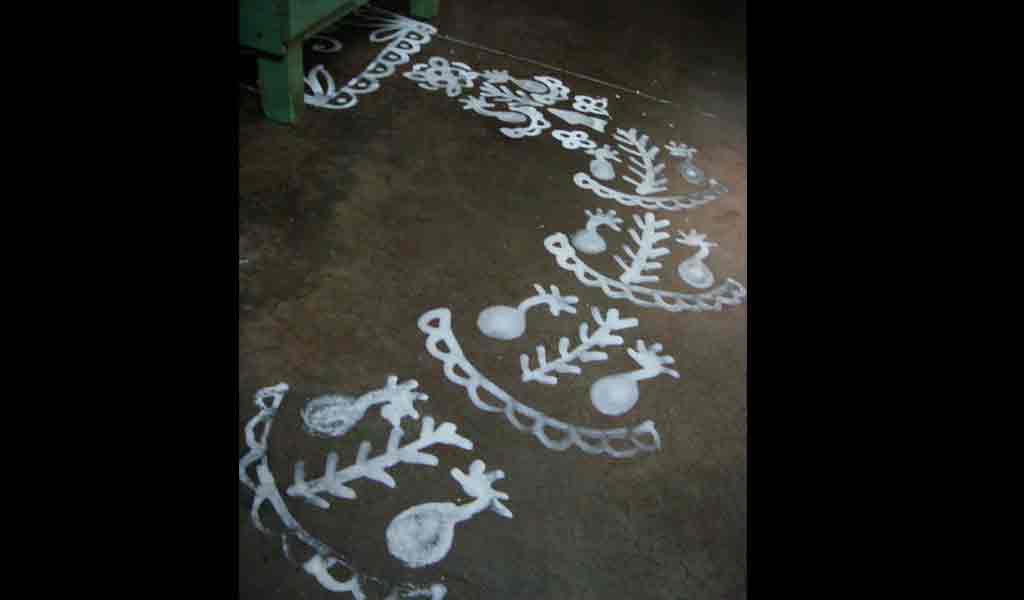Bengal’s Alpona has its roots in Harappan Civilisation! - GetBengal story
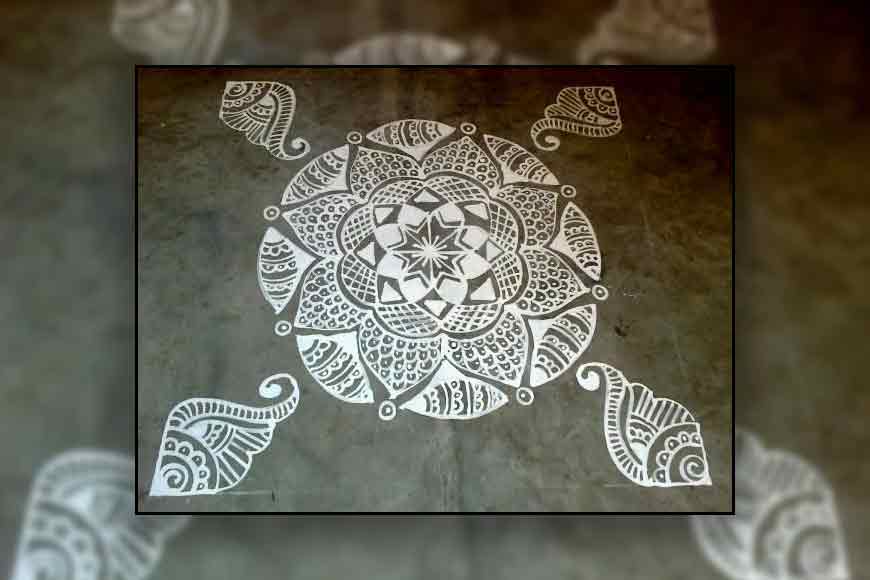
If rural Bengal has been practising alpona designing for decades, they have their roots in the first civilisation of India --- Indus Valley Civilisation. Parallel in motifs seen on pots and vases of Mohenjodaro and Harappa made historians and archaelogists believe Bengal’s alpona art has its roots in an age-old tradition that came down from thousands of year. Drawn in freehand style and depicting the hopes and wishes of one and all, the beautiful tradition of alpana has educated and bonded communities for at least 40,000 years now.
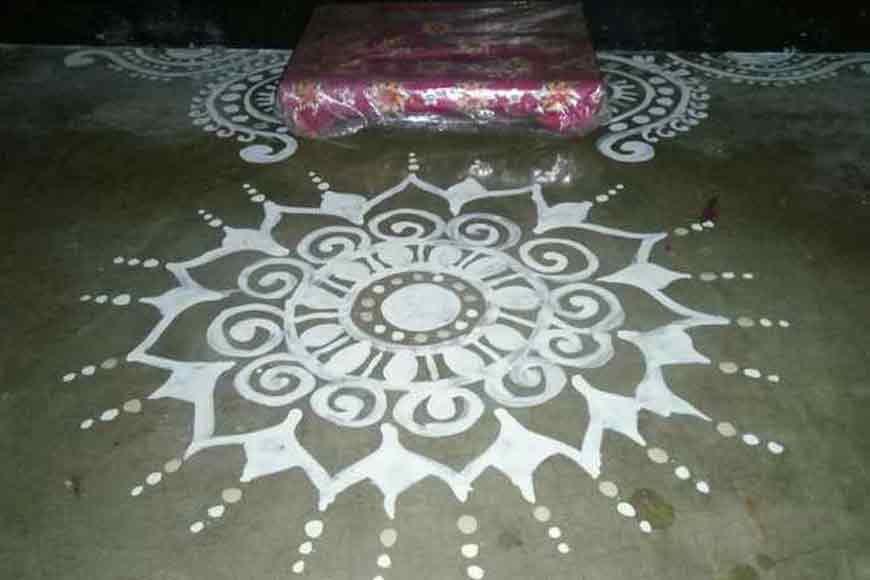
Interestingly, each alpana is connected to different stories from moral to broto – a ritual carried out at a specific time of the year to pray for fulfillment of a desire. Even rural alponas of Bengal send messages on health issues. Like to combat viral ailments, alponas depict medicinal properties of vegetables like bitter gourd and pumpkin flowers, banana trees, herbs, etc, and show how these are connected to sun, earth and the moon.
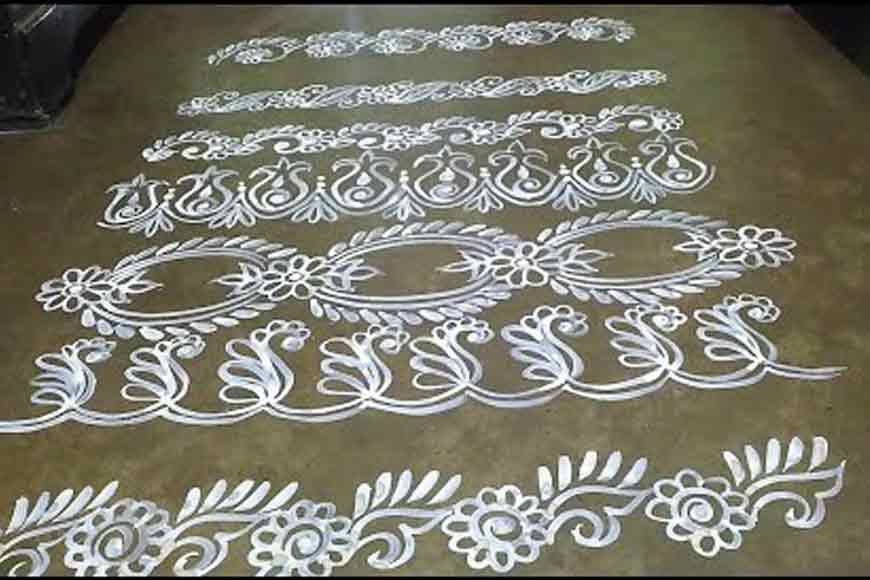
Done primarily in white, alpana is drawn using the ring finger of the right hand and has a specific set of motifs to be drawn. However, there are no rules about their shape, size, measurements or placement, leaving ample scope for creativity. There are different kinds of alponas like Purnipukur broto alpana, Dosh-putul broto, Shejuti broto alpana that involves drawing of 52 motifs of everyday items such as household utensils and tools used in various professions in a community. Also included are birds, animals and plants among other things.
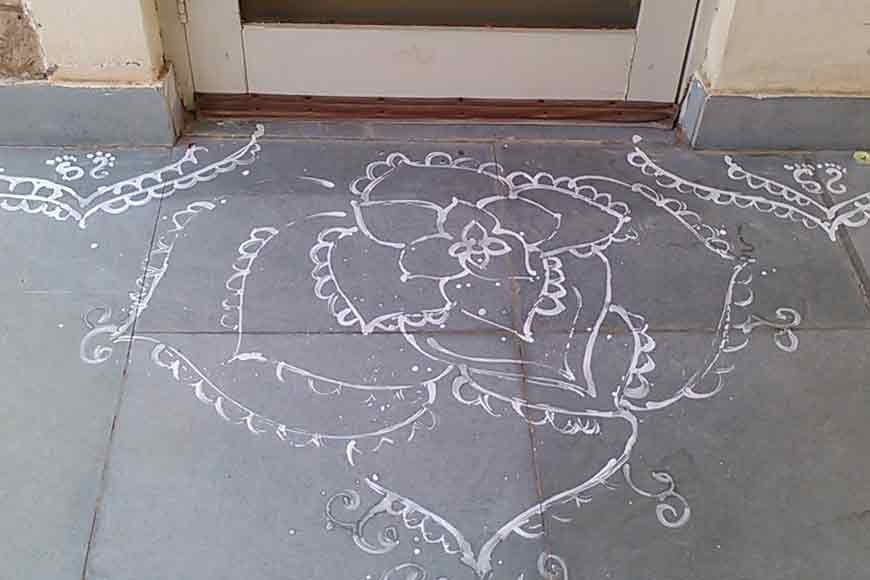
To mark festivals there is Lokkhi broto alpana, drawn to invite the deity of wealth and prosperity, this alpana is perhaps among the most popular ones being practiced today. It uses motifs such as the owl, lotuses, paddy bins, footprints of the deity and climbers. The alpana invokes the goddess to bless the home with wealth and prosperity. Then Nabanno broto alpana made near paddy bins to pray for a good harvest and wealth. Conch shells are primarily used in drawing this alpana.
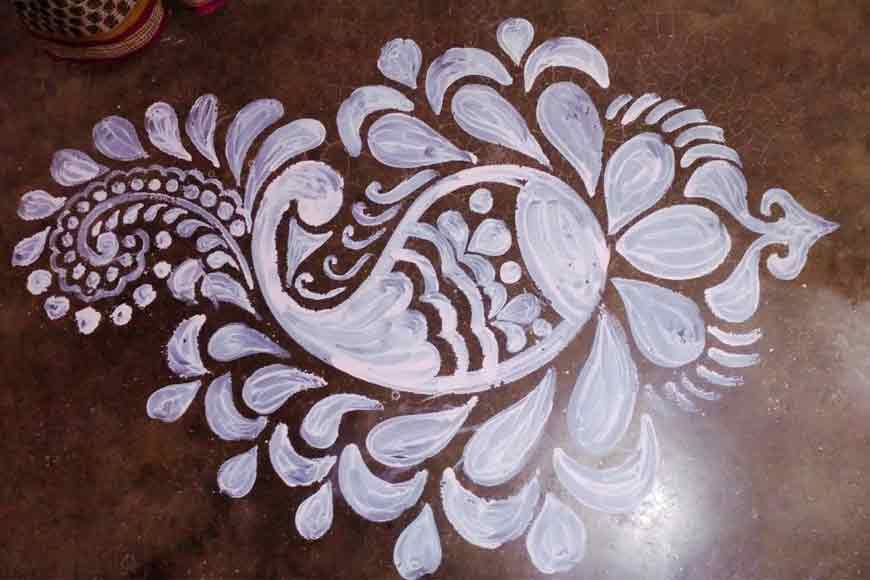
Many of these motifs are incidentally seen in the unearthed pots and pans of Harappan civilisations that have led to experimentation by different archaeologists as to whether Bengal’s popular art form is a direct descendant of this age old civilisation.
